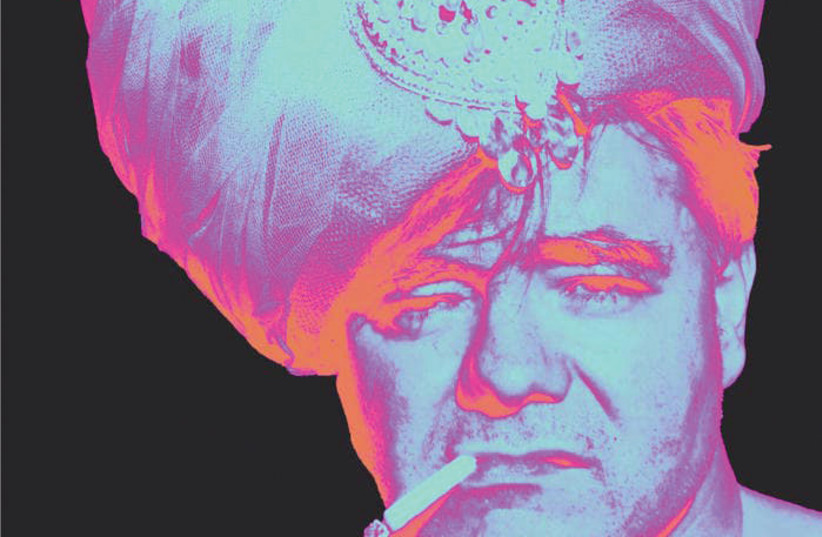Stephen Horenstein’s new album "Sounds of Siday Side B" is a loving homage to a musical genius everyone knows but few recognize.
A pioneer in “sound logos,” the audio signatures that have accompanied commercials from the time commercial television and radio began to air, British-born Jazz musician Eric Siday was the man behind the music used in the 1960s Sprite commercials, with their flashes of printed commands “Tangy!’ and ‘Taste it!’ He created the audio logo for Screen Gems, which later became Columbia Pictures.
Siday’s success, making him the highest-paid musician per second for a time, enabled him to sponsor great leaps in electronic music, such as the creation of the first percussion synthesizer, and support emerging talents as an educator.
Honoring Siday’s legacy, Horenstein, who immigrated to Israel in 1980, made sure that the former’s archive was included at the New York Public Library and the Lincoln Center, which was the first to expand to include electronic music in digital format.
Horenstein also oversaw a scholarship program encouraging young musicians to explore innovative music. Matan Daskal, conductor of the Castle in Time Orchestra, was one of them. With Daskal, Horenstein created Sounds of Siday which premiered at Israel Festival four years ago. Daskal composed Side A, to be released in April, while Horenstein composed Side B, released this month.

This reversal is due to the project’s focus on time and memory. First, we start with the latest, that which is now, and from that point, we explore what came before, the things we carry in our memory. Two orchestras played together for this project, The Lab Orchestra led by Horenstein and the Castle in Time Orchestra.
Horenstein’s works for ensemble, small orchestras, soloists, and electronics, many with Jewish themes and historical content, have been performed and recorded in venues worldwide.
The Concept of Time is a culmination of childhood memories
THE CONCEPT of time is linked to one of Horenstein’s earliest memories of being five years old and watching television, he told The Jerusalem Post.
“I learned about death. There was a cowboy show on television, The Roy Rogers Show, which ended with “Happy Trails.” The song was composed by Dale Evans, who was married to Roy Rogers at the time. On Sounds of Siday, it is sung by Eliana Lila.
“This song made me realize things end and people die,” he explained, “but then I would see these same people again next week on the screen.”
This early fascination with what time was led to his decision to follow an unusual interest and end up the only white musician at the Black music department of Bennington College, where he studied under composer Bill Dixon. Under Dixon, Horenstein learned how it is possible to take 10 musicians and make them sound like an orchestra of 100 players.
Another key factor in Black music, according to him, was how composers like Duke Ellington “knew where their people were at.” While it is possible to strip musicians and singers from their personalities and write in the abstract, the idea being that a bass is a bass and a soprano is a soprano, Black composers usually followed the idea that “the individual is an important part of the together,” he explained.
Another inspiration for his work was American composer Charles Ives. Like Siday, Ives attained commercial success, he invented creative ways of structuring life insurance. Ives also created complex compositions which led the way to modernism in music.
For Daskal, this is “sound painting,” the ability to offer rich textures of sound to create a feeling. Punk musician Jello Biafra (Eric Boucher) described this unique power of music in another way.
“So many of us can’t recall teachers or old school classmates,” he commented, “but once I begin to hum a commercial jingle nobody had seen for 15 years, everybody remembers that.”
Horenstein argued in his academic work that music can open the door to a semi-hypnotic trance from which the listener returns to the current moment refreshed and cleansed. It is possible to suggest to the listener, in that state, vastly different things. Removed from our everyday worries, a composer might suggest we buy soda, look on the bright side of life, or follow a lofty ideal – depending on what his motivations are.
Siday traces this unique aspect of music to our earliest formation in the womb. The earliest sound anyone first becomes aware of is the heartbeat of one’s mother. Even after birth, mothers often place the infant’s head close to their breast which soothes the baby. It is possible that our unique eagerness to listen to music and emerge from it renewed are linked to that very early experience.
Listening to this album today might offer some relief to the damaged Israeli psyche.
Listen to Sounds of Siday via patiphon.co.il/music/ixd3591WKK
